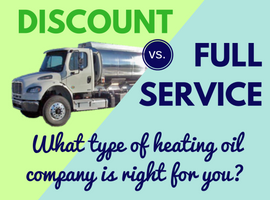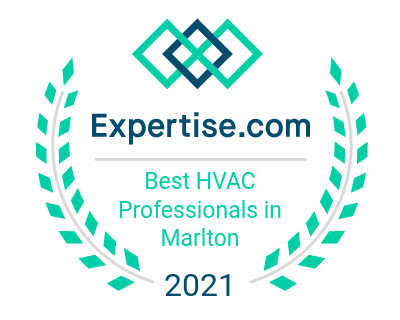Our Blog
The New Jersey Senate passed Senate Bill 4133 which prohibits the State from mandating the installation of electricity as the sole or primary means to heat space or water until public hearings are conducted and a report is issued by the Department of Community Affairs to the Governor and Legislature.
The vote was 35-3.
While the 219th Legislature will adjourn with the Assembly not considering the bill, the strong bi-partisan vote is an excellent foundation to start building from in the 220th Legislature.
Below is the press release sent out by Smart Heat NJ spokeswoman Jeanette Hoffman.
Thank you to ALL of the homeowners that contacted their legislators to make this possible!
+++++++++++++++++++++++++++++++
For Immediate Release:January 10, 2022
Contact: Jeanette Hoffman (908) 418-0859
Smart Heat NJ Applauds Overwhelming Senate Vote to Stop Murphy Electrification Mandate
Today, the New Jersey Senate passed Senate Bill 4133, which prohibits the State from mandating the installation of electricity as the sole or primary means to heat space or water until public hearings are conducted and a report is issued by the Department of Community Affairs to the Governor and Legislature.
Jeanette Hoffman, spokeswoman for Smart Heat NJ, issued the following statement.
“Today the New Jersey Senate made their position clear regarding the Energy Master Plan’s requirement to retrofit all homes and business with electric heat – they said no. By an overwhelming 35-3 vote, Senators sided with overburdened homeowners who don’t want to be forced to spend $20,000 or more to meet this mandate.
“While time in the 219th Legislature expired before the bill could be considered by the General Assembly, we are hopeful the Assembly will see the legislation’s overwhelming bi-partisan support and will prioritize stopping this misguided proposal in the 220th Legislature.
“S-4133 was supported by thousands of homeowners who contacted their legislators and urged support, as well as a broad coalition of contractors and organized labor in the HVAC industry who know the idea of retrofitting homes with electric heat is neither affordable nor practical. New Jersey residents owe a huge thank you to Senators Vin Gopal (D-Monmouth), Steve Oroho (R-Sussex), and Paul Sarlo (D-Bergen) for their leadership.”#####
Are air purification systems worth the cost? Do air purification systems really work?
Air purification systems have been around for a while, but have received a lot of limelight lately due to the global COVID-19 pandemic. Some questions have popped up about the efficacy of the system types. What do they really do? We hope to answer the following questions for you regarding air purification systems.
- What types of air purification systems are available?
- What concerns should I have about air purification systems, including byproducts & ozone production?
- How effective are the various air purification systems at removing pollutants from the air? Specifically: Smoke & odors, dust, viruses, bacteria, allergens, static electricity, etc.
- What sort of maintenance is required on each type of air purification system?
- How much do air purification systems cost?
What types of air purification systems are available?
While there are a host of types of air purification systems available, there are a few ways of dealing with indoor air purification. In the simplest of terms:
- Filtration – Improving the filtration system within your HVAC system can trap or reduce water droplets that carry viruses and other contaminants. Currently, experts recommend upgrading to a MERV 13 filtration classification (if your system can handle that level of filtration).
- Ionization – An ionization system installed in your ductwork will actually kill mold, bacteria, and viruses. It also reduces allergens, odors, smoke, and static electricity as well as keeping your AC coil cleaner.
- UV light – UV lights can be effective in coil sterilization. Coil UV lights are the most common UV light systems. They are especially effective at controlling mold and bacteria but have less effect on other allergens or dust. You can also have UV air sanitizing lights for the air in the ducts that bring return air to the system. The lamps themselves obviously need periodic bulb replacement.

What concerns should I have about air purification systems, including byproducts & ozone production?
There have been air purification devices that have historically marketed “cleaner air”, while at the same time producing other harmful byproducts. So you DO need to make sure that whatever air purification system you’re considering produces no harmful byproducts. However, there are MANY systems available now that really DO purify the air, without harmful byproducts and without producing ozone.
How effective are the various air purification systems at removing pollutants from the air? Specifically: Smoke & odors, dust, viruses, bacteria, allergens, static electricity, etc.
Here is where you really will find significant differences between air purification systems. Different air purification systems improve indoor air quality in different ways. Thus, different types of systems vary greatly in their effectiveness against specific air pollutants.
Ionization Air Purification Systems:
If you choose an ionization system, you’re choosing a machine that essentially creates ions with positive and negative charges. These ions break down various forms of pollutants and gases into other harmless gases like carbon dioxide, oxygen, water vapor, etc. These ions also kill living air pollutants like bacteria, viruses, and mold. Ions typically cause other pollutants that can’t be broken down (like pollen for example) to clump together, such that they get stuck in the air filter of your HVAC system.
Bottom line – ionization machines will be marketed to KILL certain irritants, and REDUCE others. A good system should produce no ozone or harmful byproducts in the process.
An ionization system that we currently recommend to our customers is the iWave system, because it’s simple, effective, affordable, and requires no upkeep in terms of replacing bulbs, etc. If you think ionization is a good fit for you, we’d recommend this system. We are equipped to do the install for you.
UV Light Air Purification Systems:
If you choose a UV Light System, you’re looking primarily at sterilizing the coil. If you have central air, then your indoor coil condenses moisture from the air to cool your home. Dust, pollen, and other air pollutants stick to the wet coil. This is PRIME breeding grounds for bacteria and mold. The lights basically shine on the coil and create an environment where bacteria and mold cannot grow.
Other UV light options include air sanitizing lights. You install the lights in your return air ductwork to clean the air before it ever reaches the system and the coil.
You can choose a complex system that combines BOTH Ionization AND UV lights.
What sort of maintenance is required on each type of air purification system?
Ionization machines are typically maintenance free, with the exception of the possible occasional cleaning of the machine.
UV Light systems obviously require light bulb changes, most needing to be changed annually.
How much do air purification systems cost?
The sky’s the limit. Well not really. But prices vary significantly across product types. Systems might cost as little as a few hundred dollars, uninstalled. You could spend over $10,000 on having various systems professionally installed on multiple units in your home.
We’re running a special right now on an ionization system, the iWave system mentioned above. Our current offer is $795, installation included. We feel that the system is a very good blend of function and practicality. But each system has its pros and cons. We’d be happy to go over other options with you as well and can install any system of your choosing. If you’re interested, give us a call with any questions you have! We hope this has been helpful!

Many homes still use an older air conditioner that requires R22 refrigerant. If you’re still using an R22 refrigerant system, you’re not alone. Are you wondering what to do now? It’s definitely time to evaluate your options for an air conditioning system upgrade.
As of January 1st, 2020, the R22 refrigerant is officially obsolete. R22 refrigerant is used in many older air conditioning systems. It cannot be manufactured or be imported into the United States anymore. This is in accordance with environmental regulations.
Your R22 air conditioner can of course still continue to run (for now). However, when a repair is needed, the technician may not be able to supply coolant to your system. He/she won’t be able to source the R22 refrigerant. You’ll be forced into an emergency upgrade. This can be costly. Especially when it (inevitably) occurs on a 95 degree day.
If you know that you’re facing a big upgrade in the near future, the best thing that you can do is to plan for the inevitable. You have a few options.
Option 1: Milk every last drop of life out of your current air conditioner.
This option must include saving up for your eventual upgrade. You’re planning on basically leaving the timing to fate. (You’re taking the risk that the air conditioning goes out on a 95 degree day in late July.) So you need to be confident that you’re prepared financially to perform the upgrade immediately. (At least if you have any hopes of staying comfortable.) The upgrade should be able to occur fairly quickly, but every situation is slightly different.
Option 2: Plan your air conditioner upgrade for the spring, taking advantage cost saving opportunities.
If you know the inevitable is around the corner, you might prefer to take your time considering your options. A well planned upgrade will be less expensive than an emergency rush situation. You might even find promotions and rebates. But at the very least, you will reap significant savings from the improved efficiency alone of your unit. Not to mention you can plan the timing of your install! Now is the perfect time of year to get your upgrade underway, so that you avoid the headaches of the gambling game.
Option 3: Make modifications to your current air conditioner to utilize a different refrigerant.
Honestly, we do not recommend this option. Modifications can be tricky and vary. Often the modifications still only buy you a few more years out of your air conditioner. The hassle to undergo modifications only to have to upgrade your air conditioning system a few years later is not ideal. It doesn’t hurt to look into this option, but you shouldn’t be counting on much here. R22 refrigerant is obsolete because of environmental reasons. We’ve come a long way in the world of air conditioning systems in the years since your system was installed. Upgrading to a newer more efficient air conditioner can save you quite a bit of money on energy costs.
Ultimately, the decision is yours. If you’re ready to forge onward with the install, please give our office a call! We’re happy to answer any questions that you might have about We’re fully staffed and ready to help, even in the current COVID-19 environment. We have personal protective equipment, we follow social distancing and other CDC guidelines, and we will sanitize our presence in your home. There is no better time for an install!





